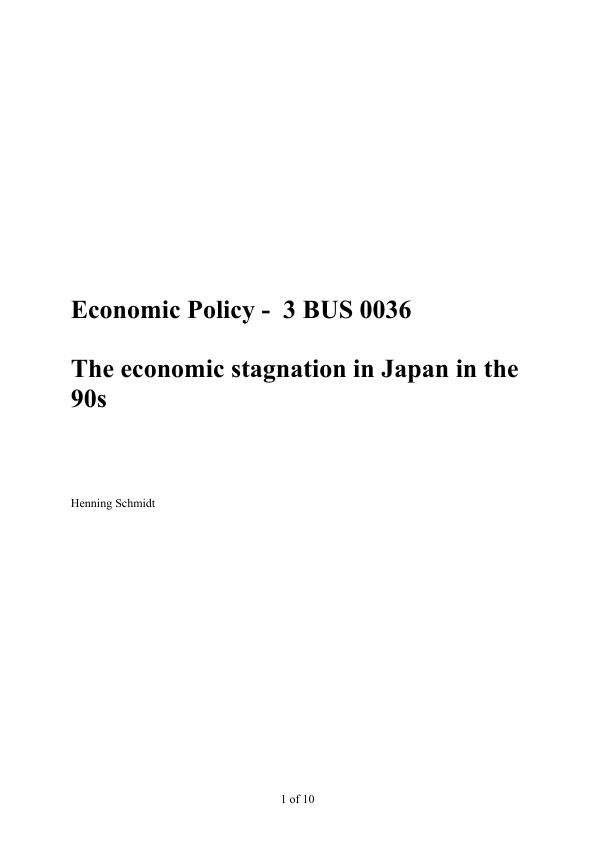Resumen o Introducción
This report will examine the economic stagnation in Japan in the 1990s. The second section will introduce the events in the 1990s and give the most important features, followed by a closer look at the chain of events, explaining what caused what in a chronological approach. From there, we will introduce a set of possible reasons for the depicted developments and the theoretical frameworks in the third and fourth section which will then lead to our conclusion based on the analysis given before, accommodating the conclusion of Krugman of Japan being in a liquidity trap in our findings. 2. Japan in the 90s - summarizing macroeconomic developments
This section will introduce the phases considered, the building the “bubble” in the 80s, “burst” of the bubble in February 1991, continuous recession and seeming recovery in 1996 and renewed economic downturn from 1997 on until 2000, the end of the considered timeframe.
a. Build-up of booming asset and real estate market - “bubble economy” Japans Economy in the 80s showed strong growth of above average, e.g. 4.1% ten year average growth in 1986 (Weinert, 2001, p. 461) and very low inflation (Baig, 2003, p. 5). Declining regulation of the financial sector and generally lax regulation led to a creditfuelled boom in the land- and asset-markets (Schrooten, 2000, p. 2). Within this process, the boom-financing bank-loans were built on collaterals of mostly land or stocks, accumulating risks in the loan books of the banks (Woo, 1999, p.7). b. “Burst” of the bubble
By 1989, the Japanese stock market peaked, in 1992, land prices start to decline. Both are related to government intervention, the stock market was affected by a change of the discount rate by the Bank of Japan (BoJ) and the latter was influenced by a restriction of maximum loans to real estate in April 1990 (Baig, 2003, p. 8). The economic downturn in the aftermath was worsened by interconnection of bank loans and declining value of collaterals.
- Citar trabajo
- BA (Hons) Business Economics Henning Schmidt (Autor), 2005, The economic stagnation in Japan in the 90s, Múnich, GRIN Verlag, https://www.grin.com/document/68029
Así es como funciona






















Comentarios
This is a fantastic work, very relevant in the present day context. In my humble opinion, Japan's down time was a warning for the rest of the world. The global leaders should now look for more avenues to avoid or mitigate economic recessions.